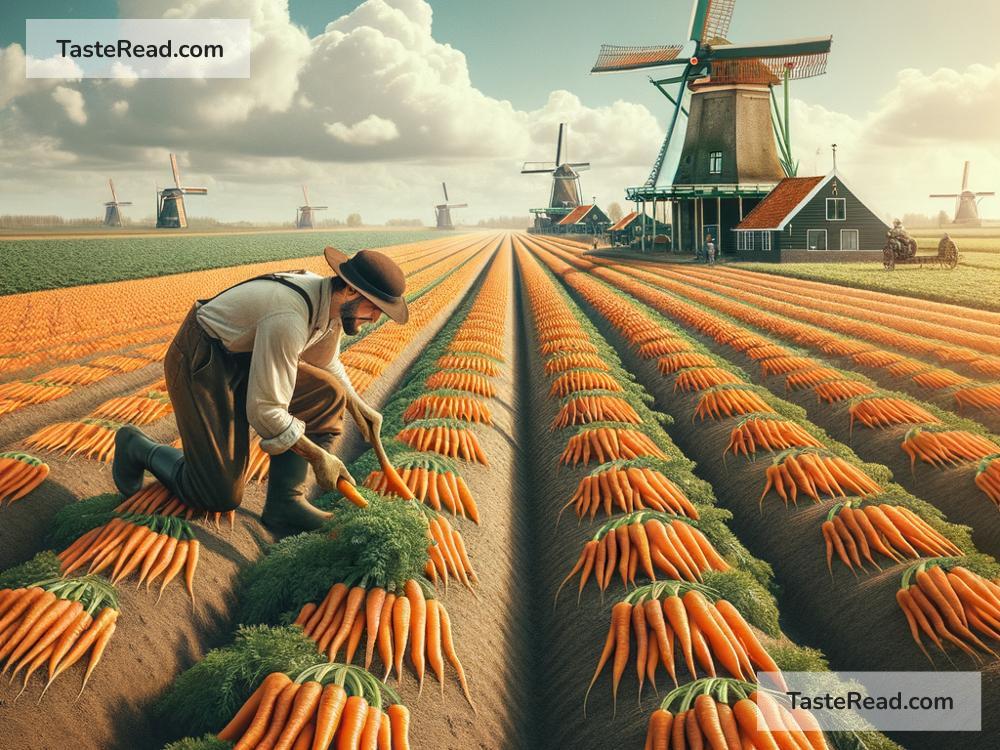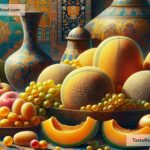The Surprising History of Carrots in Dutch Agriculture
When you think of carrots, you probably picture the orange ones we see in grocery stores today. But did you know that carrots weren’t always orange? And did you know that the Netherlands, renowned for its agricultural achievements, played a key role in making the orange carrot popular around the world? The story of carrots in Dutch agriculture is full of surprises. Let’s explore how this humble vegetable became a symbol of Dutch ingenuity and pride.
The Roots of Carrots: A Colorful Beginning
Carrots have been cultivated for thousands of years, but the earliest carrots weren’t orange at all. Historians believe that carrots were first domesticated in the region that today includes Afghanistan, around 900 CE. These early carrots were purple, yellow, or even white, and they were considered medicinal rather than a tasty treat. Purple carrots, in particular, were prized for their unique color and health benefits.
From Central Asia, carrots slowly made their way westward and into Europe during the Middle Ages. Farmers grew different varieties of carrots, mostly purple and yellow, but the modern orange carrot was nowhere to be seen. It wasn’t until the 16th and 17th centuries that orange carrots emerged, thanks to clever Dutch farmers.
Why Are Carrots Orange? The Dutch Connection
The Netherlands has been an agricultural powerhouse for centuries. Known for their expertise in farming and horticulture, Dutch farmers took great pride in improving crops to make them taste better, grow faster, or look more appealing. During the late 1500s and early 1600s, they began experimenting with carrot varieties, crossbreeding plants to create new types.
These innovative farmers managed to develop a carrot with a striking orange color. But why did they choose orange? Some historians believe that it was more than just a marketing decision. The orange carrot was likely created as a tribute to the Dutch royals, particularly the House of Orange-Nassau, a royal family that played a pivotal role in the nation’s history. Orange had become a symbol of national pride, and a carrot in the vibrant shade of orange seemed like the perfect patriotic gesture.
While the connection to the royal family is debated, one thing is clear: Dutch farmers succeeded in creating a delicious and visually appealing carrot that quickly gained popularity. Orange carrots were sweeter, more nutritious, and less bitter than their purple counterparts. By the 18th century, they dominated markets across Europe.
The Spread of the Orange Carrot Around the World
The Netherlands didn’t just invent the orange carrot; they helped spread it globally. Dutch traders were influential during the 17th and 18th centuries, reaching markets in Asia, North America, and beyond. Wherever the Dutch went, their orange carrot often followed.
As other countries adopted this new variety of carrot, the purple and yellow types began to fade away. Today, orange carrots are the most common type of carrot consumed worldwide. While you can still find purple, red, and yellow carrots in specialty markets, they’re less popular than the bright orange version.
Carrots and Dutch Agriculture Today
Fast-forward to the modern day, and the Netherlands remains one of the leading producers of carrots in Europe. Dutch farmers have perfected their methods over centuries, making the country famous for producing high-quality vegetables. Carrots are grown in abundance, both for local use and export. The Netherlands also holds an important position in the global seed market, providing carrot seeds to farmers in other countries.
Dutch greenhouses and farms use cutting-edge technology to grow crops efficiently and sustainably. From controlling temperature in greenhouses to monitoring soil quality, Dutch agriculture is often seen as the gold standard, and carrots are no exception. It’s incredible to think that a vegetable with such a long history continues to thrive in the fields and greenhouses of the Netherlands.
Fun Facts About Dutch Carrots
-
Variety in Color: While orange remains the most popular, Dutch farmers have revived interest in multicolored carrots. You can now find purple, red, yellow, and white carrots in specialty markets. These carrots add fun colors to dishes while celebrating their colorful history.
-
World’s Largest Producers: The Netherlands ranks among the top carrot-producing countries in Europe, alongside Poland, Germany, and the UK.
-
Symbol of Pride: Orange carrots are sometimes seen as a connection to Dutch history and the House of Orange. During national celebrations, like King’s Day, the color orange—and sometimes orange carrots—takes center stage.
The Legacy of Dutch Carrots
The history of carrots in Dutch agriculture is a surprising tale of innovation, tradition, and pride. The orange carrot we eat today is a direct result of Dutch farmers experimenting with plant breeding hundreds of years ago. What started as a colorful tribute to the country’s royal family turned into an agricultural triumph that spread worldwide.
So, the next time you crunch into an orange carrot, remember the creative Dutch farmers who helped shape its history. Whether it’s in a soup, salad, or snack form, the carrot remains not just a simple vegetable but also a symbol of Dutch creativity and global influence. Who would have thought such a small veggie could have such a surprising past?


